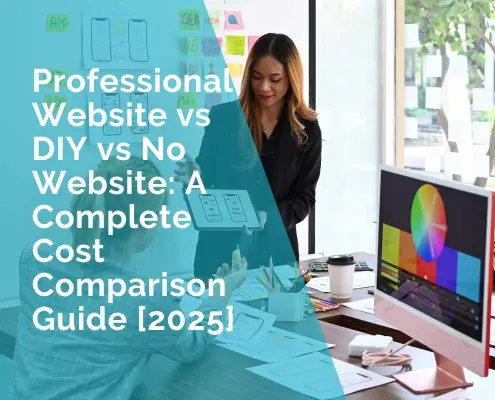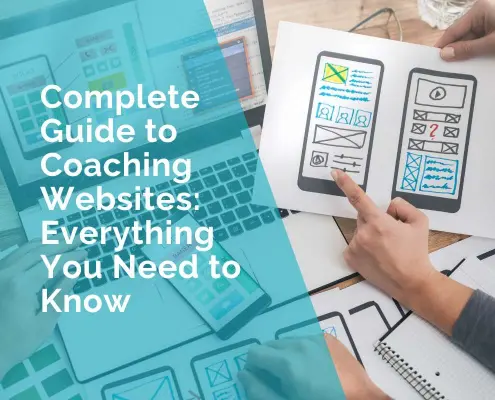14 Website Secrets to a Successful Content Marketing Approach
Are you struggling to create a successful content marketing campaign for your brand and website?
Content marketing is a strategic marketing approach that helps you create and distribute relevant, valuable, and consistent information to attract and retain clearly defined audiences, increase traffic to your website, improve your ranking and spike profitable consumer action.
For your content marketing strategy to achieve the desired goals, you have to ensure that the approach is up-to-date, innovative, engaging, and appealing to your target audience. Read on for 14 website secrets and tricks to a successful content marketing approach for your brand.
1. Set your mission and goals
The first step to a successful content marketing approach is setting out a well-defined mission statement. A mission statement helps you remain focused on what is essential when creating posts so that your content marketing approach stays on track. Your mission statement should outline.
- The target audience
- The type of content you will use to reach the audience
- How your audience will benefit from the content
Once you define how your audience will benefit from your content, you should determine what the marketing strategy will help you achieve. Typical content marketing goals include:
- Increasing website traffic
- Improving ranking to gain authority and influence
- Reduce marketing costs
- Improve revenue
- More social media engagement
- Improve search engine optimization
2. Establish key performance indicators (KPI)
After defining your content marketing strategy goals, you should strive to achieve them. To do this, you should make your goals specific and measurable by establishing key performance indicators for your content marketing approach.
Key performance indicators provide milestones you could check out to help you determine when you have achieved specific goals. Some crucial key performance indicators for your content marketing strategy include:
- Website traffic
- Mentions and shares
- Revenue
- Sales
- Lead magnet downloads
- Marketing costs
- Search engine optimization
- Social media and email marketing metrics
Not sure how to set key performance indicators for your website content marketing goals? Consider seeking the services of a reliable content marketing agency for assistance.
3. Conduct a content audit
The longer your website has been around, the more content you are likely to have. You should perform a content audit to track down and organize your published content. This helps to align your web content to your goals.
By regularly monitoring the content on your site, you can determine which posts perform the best and those that do not. Based on the performance of the existing content, you can either decide to update, delete, consolidate or redirect it.
This ensures that your site only has high-performing web pages. Consider updating or improving irrelevant or outdated content with relevant keywords and phrases to your goals instead of redirecting or deleting the pieces. The following are some of the options when performing a content audit:
- Delete 404 for content with no backlinks or traffic
- Manual content review to improve web content with lower traffic
- Update or redirect 301 for content with a single followed backlink but zero traffic
4. Integrate search engine optimization
For your content management strategy to be successful, you have to incorporate other digital marketing initiatives such as search engine optimization( SEO). Integrating SEO into your content marketing strategy helps you garner quality and quantity organic traffic to your website from various search engine results.
SEO helps you find relevant keywords and phrases frequently used by your target audience when finding solutions to their questions. You can then create authentic, valuable, and unique content revolving around these keywords and phrases to improve your rankings on various search engines such as Bing and Google.
When doing keyword research, pay more attention to long-tail terms to attract relevant traffic to your site and boost conversion rates. Use tools such as Google Search Console, Google Ads Keyword Planner, Rank Tracker, and Keywords Everywhere to find relevant phrases for your website content.
Other factors such as site architecture, backlinks, and inbound links also impact your search engine optimization and content. By optimizing your website content, you improve your online visibility making it easy for the target audience to find you. You also benefit from better conversion rates, increased sales volume, and revenue.
5. Exploit your audience’s emotional buttons
Buyers often base their purchasing decisions on feelings, so you should ensure that all content you create and publish taps on your audience’s emotional buttons. This helps your readers relate to your content and want to read more. They may even end up sharing the content with others, which increases your web traffic. You could use your web content to inspire your readers, pique the audience’s curiosity, instill fear of missing out or make them laugh.
Include emotion-based keywords to your website content to capture the attention of your target audience and spike their interest to continue browsing your web content. Be sure to conduct extensive research to understand your audience’s interest to create unique and engaging content that pushes your reader’s emotional buttons.
6. Develop a content calendar
Having a content calendar helps you share relevant content on your website and social media platforms regularly. Do not just publish content on your website when you feel like it. Plan what to post on various media and when to publish it to ascertain a consistent flow of content. When creating a content calendar, you should:
- Mark the type of content you intend to create
- Determine the title and content subject matter
- Set the date and time to publish
- Determine the platform where you intend to publish the content
- Account for special events and holidays to guarantee an informed schedule
- Give room for last-minute content opportunities
7. Repurpose web content
Creating fresh content for your website can be a time-consuming and challenging process. It is even harder to get your content noticed on the web and various social media platforms. Consider reusing or repurposing existing content instead of investing time and resources to create new content.
By repurposing or reusing existing content, you may reach a new audience and reinforce information to readers who have seen the pages in the original form, which could trigger them to take the desired action. Ensure that you only repurpose, reuse or republish top-performing existing content to present only relevant content to your audience and maximize traffic. Some of the ways you could repurpose existing content include:
- Trim videos into short snippets
- Turn existing blog posts into downloadable PDFs
- Convert quotes into visuals
- Turn customer feedback and reviews into case studies
- Convert shorter blog posts into Quora answers
- Turn audios in narrated videos into podcasts
- Convert valuable content into email series
- Change a blog post into a webinar
8. Incorporate Q&A formats
Incorporating Q&A formats in your content marketing strategy generates your brand’s exposure by increasing web search traffic. Search engines such as Google and Bing parse search results by matching user questions to relevant content in the search bar.
To determine the type of content to include in your website, you should evaluate the kind of queries your target audience is likely to ask when searching for solutions online. Next, determine the results that pop up from ranking competitors and develop content that answers customers’ queries in a thorough, truthful, and helpful manner.
This will not only add value to your customers. It will also increase traffic to your site, improve conversion rates and sales volume, and give you a competitive edge.
9. Use long-form content
The length of your post is a crucial factor to consider when determining appropriate content for your marketing strategy. You should consider creating long-form posts, 1000 words or more. Long-form articles are likely to generate three times more organic traffic than shorter posts since readers will spend more time on your site to go through your content.
You could also improve the ranking and visibility of your site through longer content on search engines like Google. The passage indexing algorithm allows search engines to rank sections of your post based on the user’s questions, regardless of the topic, or the rest of the content, meaning more traffic.
10. Focus on evergreen content
While you could base your website content on current events, these happenings last for a specific period, meaning your content could become outdated and irrelevant over time. This leads to a waste of your time and money. Instead of jam-packing your website with posts based on current events, focus on creating content that is not time-sensitive.
Evergreen content will remain relevant over the years and always interest your readers. Consider using videos, infographics, images, blog posts and Slideshare presentations to create evergreen content that targets beginners on subjects relevant to your niche. Some evergreen content you could include in your website include:
- Tutorials
- Tips and tricks
- Research
- Case studies
- Guides
- Best practices
- Common mistakes
11. Use captivating visuals
Looking for a way to keep readers hooked to your website content? Consider using compelling visuals to break large blocks of text. Although long-form posts are appealing, you may quickly lose a reader’s interest if the content is plain.
Breaking the monotony of longer text helps make your posts memorable and improves the shareability of your content. You could use diagrams, custom visuals, or infographic elements, to mention a few, to make your content more engaging. Ensure the visuals you add to the various sections of your content align with the point you are trying to put across and are relevant to your post,
You do not have to be a graphic designer or incur the cost of hiring one to add relevant visuals to your content. You could invest in online visual creation tools such as Canva, Bannersnack, Infogram, Snappa, Visme, and Venngage to create unique, attention-getting, and captivating graphics for your content.
12. Strive to educate and highlight expertise
You should not solely focus your website content on making product sales or brag about your services. Your posts should also establish you as an authority and expert in your niche. To achieve this, you should go beyond your brand and analyze broader issues in your industry and problems that affect your target audience. You could then create content that educates your audience on handling various challenges.
This will not only showcase you as an expert in your niche. It will also show that you care for your clients and build trust among existing and potential clients. You could also benefit from increased traffic and sales, improved ranking, and better conversion rates when you publish informative and knowledgeable content.
13. Readability and friendliness
Create easy-to-read and understand website content. When creating posts for your website, ensure that you create a bridge between your thoughts and target audience understanding. This helps to increase user engagement which leads to more web traffic.
Be sure to also make your content mobile-friendly. Almost 55% of website traffic today comes from mobile devices, so you should test your content on these devices before publishing. Ascertain that all aspects of your content, including visuals, can easily be accessed via mobile phones without slowing the loading time. Search engines like Google and Bing favor mobile-friendly content, so you are likely to benefit from improved rankings and more traffic, giving you a competitive edge in the industry.
14. Focus on content distribution
Creating top-notch website content is not enough. You further need to find ways to get your posts in front of your target audience for a successful content marketing approach. Along with researching valuable information for your website posts, you should determine where most of your target audience congregates online. Pay more attention to the trends your target audience cares about, their YouTube comments, social media influencers, and newsletters to get insights on the proper distribution channels to drive more traffic to your site and get profitable consumer action.
Endnote
Investing in a content marketing strategy is an effective way to reach your target audience, increase sales and traffic to your website.
To ensure the success of your content marketing approach, you should set your mission and goals, establish KPIs, perform a content audit, and focus on evergreen content.
Remember to add visuals to your posts, repurpose popular content and push your target audience’s emotional buttons.













